✓ Joining us on our Whatsapp Channel: 💬 Explore and Escape!.
Booking through us:
✓ 🏩 🛌 Handpicked Luxury Stays in Budget: Booking.com | Agoda.com
✓ 🍹⛱️ Deals on Private xfers, SIM Cards, City tours, Day trips : 📍🗺️ GetYourGuide | 🛵🧳 Klook
If you have seen the landmarks in Europe
, you’d know there are quite a few of them are here in Albania.Nestled between the rugged mountains and azure waters of the Adriatic Sea, Albania’s landmarks stand as proud sentinels, bearing witness to the nation’s rich history and indomitable spirit.
From the ancient ruins of Butrint to the imposing fortress of Kruja, each landmark tells a story of resilience, triumph, and the enduring legacy of a people who have refused to be defeated.
1. Skanderbeg Square-Tirana
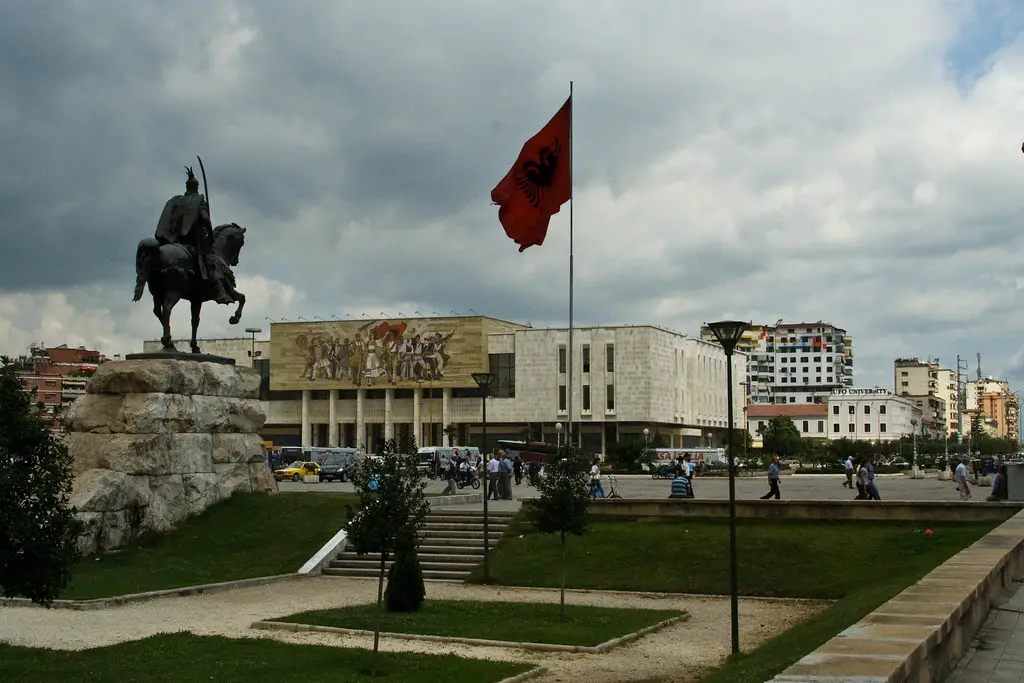
Skanderbeg Square is the main square of Tirana, the capital city of Albania. It is named after one of Albania’s national heroes, Skanderbeg.
What to see or do: The square is one of the best places to start exploring Tirana.
It houses important buildings and monuments such as the National Historical Museum, Et’hem Bey Mosque, Clock Tower of Tirana, and the Palace of Culture.
You can also enjoy a walk through the square and take in the vibrant atmosphere of the city.
Don’t miss: The mosaic on the square that depicts the well-known Albanian hero, Skanderbeg, on horseback.
Insider travel tips: Skanderbeg Square is a great place for people-watching and taking photographs. If you want to avoid crowds, visit early in the morning or late in the evening.
Additionally, be mindful of the traffic when crossing the square.
2. Et’hem Bey Mosque-Tirana
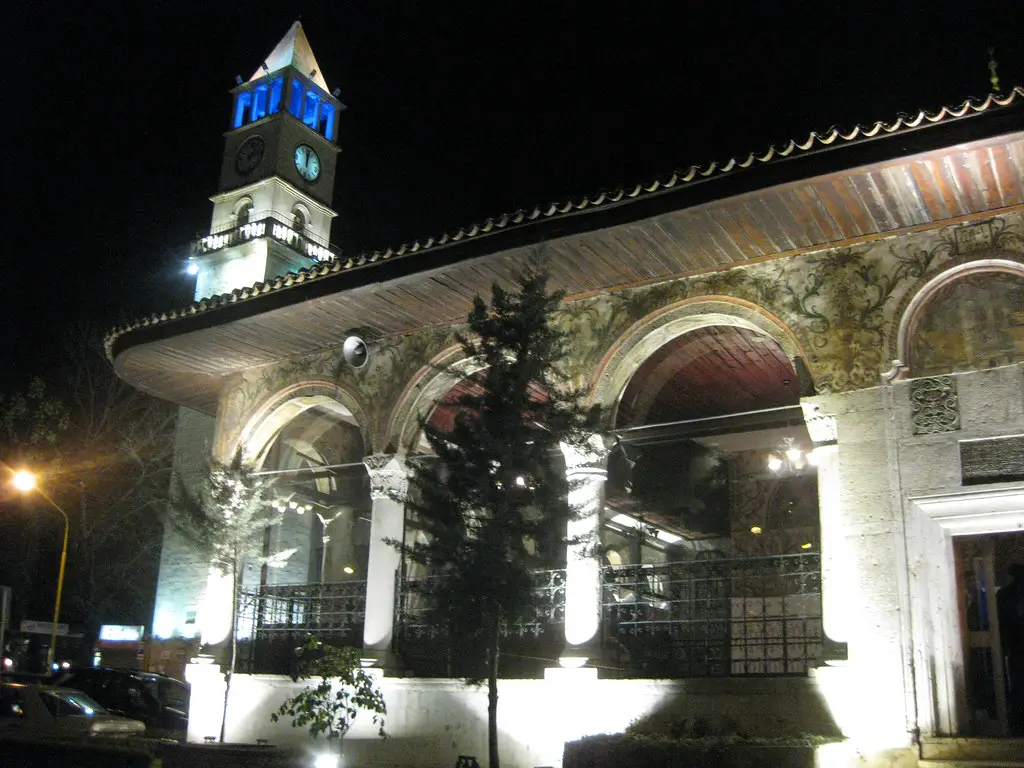
The Et’hem Bey Mosque is a historic mosque located in the heart of Tirana, the capital city of Albania.
What to see or do: The mosque is known for its stunning Ottoman-era architecture and intricate frescoes and paintings that adorn the walls and ceiling. Visitors can admire the mosque’s exterior and interior design, as well as listen to the soothing call to prayer.
Don’t miss: One of the highlights of the mosque is the stunning central dome surrounded by four smaller domes, which collectively create an impressive architectural composition.
Insider travel tips: – Visitors are expected to dress modestly and remove their shoes before entering the mosque.
3. National Historical Museum-Tirana

National Historical Museum in Tirana is the largest museum in Albania, dedicated to the history of the country.
What to see or do: The museum exhibits a rich collection of objects and documents from ancient times to the modern era, including traditional costumes, weapons, tools, and photographs.
Visitors can explore the different sections of the museum to learn about the Illyrian, Roman, Byzantine, and Ottoman periods, as well as the Albanian national liberation struggle and the communist regime.
Don’t miss: Some of the most fascinating exhibits in the National Historical Museum include the famous Albanian flag with the black two-headed eagle, the Illyrian burial monuments, the medieval icons and paintings, and the personal effects of leaders like Enver Hoxha.
Insider travel tips: If you’re interested in Albanian history, the National Historical Museum is a must-visit attraction in Tirana. Plan to spend at least a few hours exploring the museum’s extensive collection.
You can also take a guided tour to learn more about the exhibits and their significance. Note that photography is not allowed inside the museum.
4. Dajti Mountain-Tirana
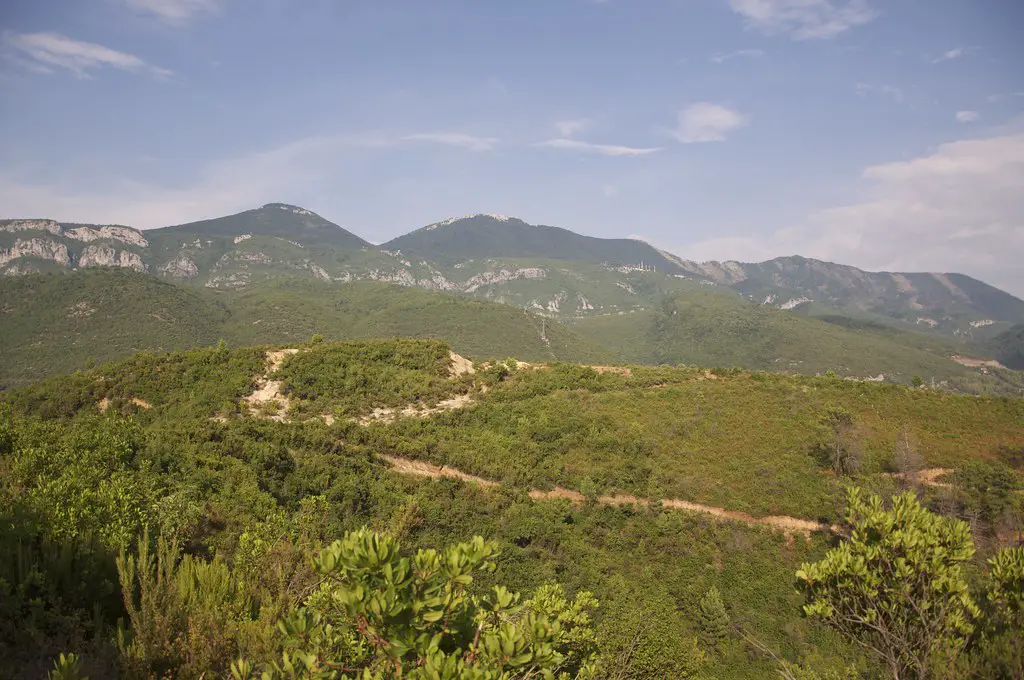
Dajti Mountain is a picturesque peak just outside of Tirana, the capital of Albania.
What to see or do: – Take the cable car to the top of the mountain for stunning views of the city and the surrounding landscape.
Don’t miss: – The panoramic views of Tirana from the cable car and the top of the mountain.
Insider travel tips: – It’s a good idea to bring layers with you as the weather at the top of the mountain can be significantly cooler than in the city.
5. Lekuresi Castle-Saranda
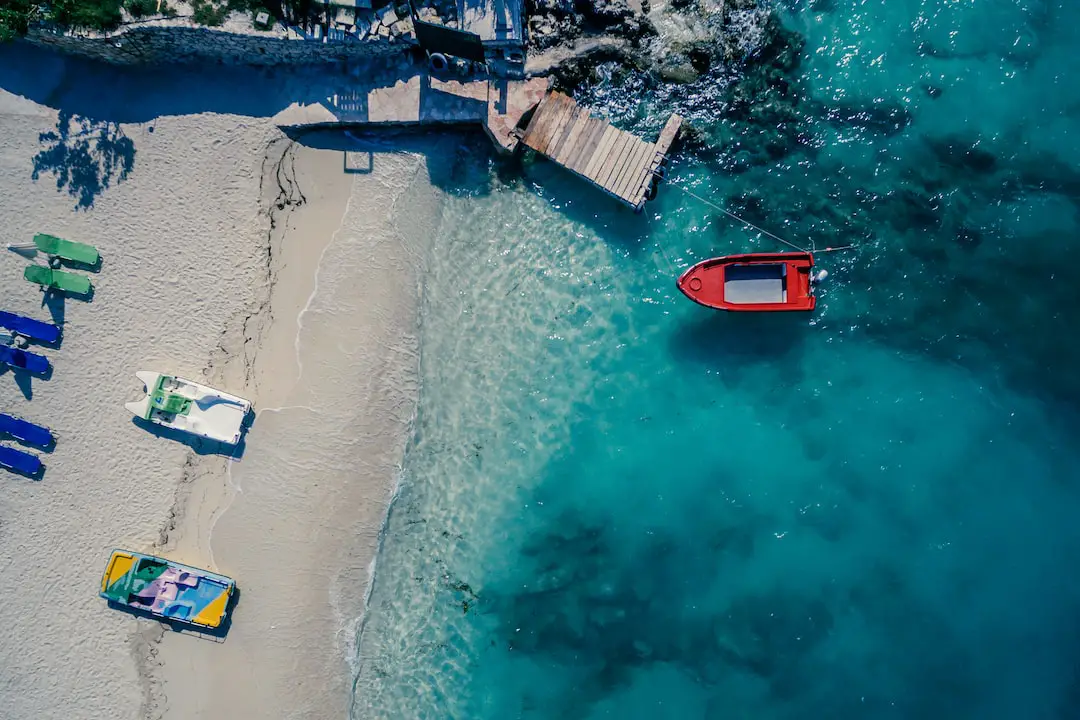
Lekuresi Castle is a historic fortress located on a hilltop overlooking the city of Saranda in Albania.
What to see or do: Visitors can explore the castle’s interior and stroll along its ramparts to enjoy stunning views of the Ionian Sea and the town below.
There is also a restaurant within the castle walls where visitors can dine while taking in the view.
Don’t miss: Watching the sunset from the castle’s terrace is a must-do experience. The view of the sun setting behind the mountains and over the sea is truly breathtaking.
Insider travel tips: Consider taking a taxi or driving up to the castle, as the hike up the steep hill can be challenging for some.
It’s also a good idea to visit in the late afternoon to avoid the crowds and catch the sunset.
6. Royal Palace of King Zogu-Durres
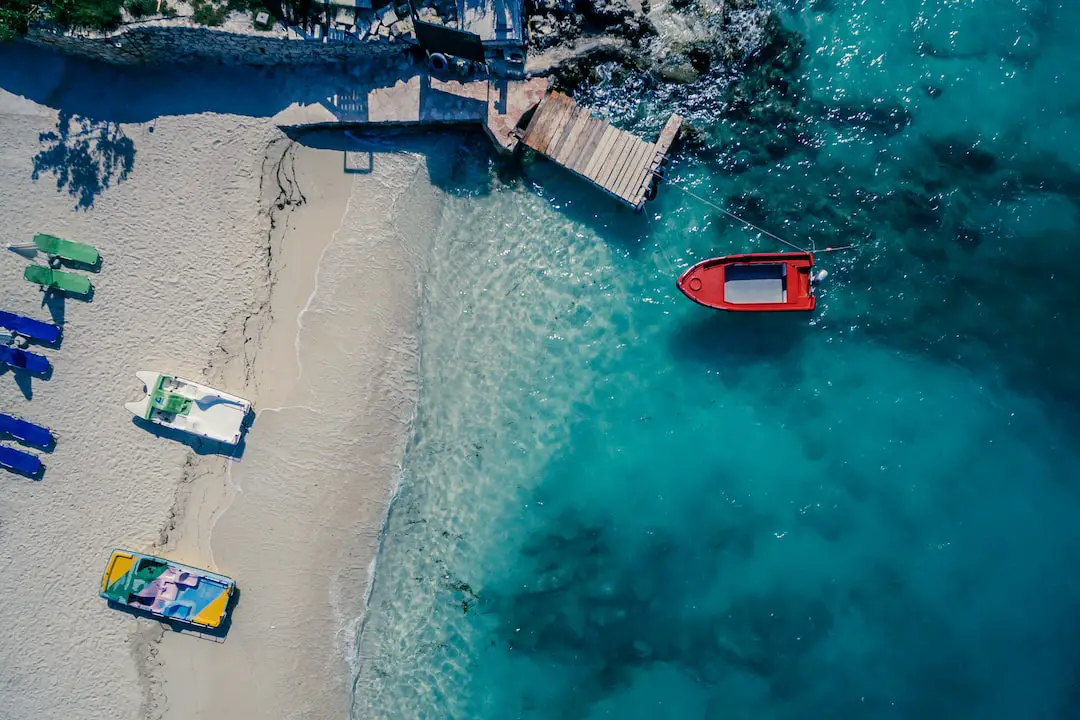
A historical palace located in Durres, Albania, that served as the former residence of the royal family during the reign of King Zogu.
What to see or do: Visitors can explore the palace’s stunning architecture and impressive collection of royal artifacts, including ornate furnishings, artwork, and personal belongings of the former king and queen.
The palace also overlooks the beautiful Adriatic Sea, providing breathtaking views.
Don’t miss: The palace’s lush gardens, which are beautifully manicured and offer a peaceful escape from the hustle and bustle of the city.
Be sure to also check out the palace’s impressive throne room, which is adorned with rich tapestries and intricate carvings.
Insider travel tips: Be sure to wear comfortable shoes, as there is a considerable amount of walking involved in exploring the palace and its grounds.
Visitors should also bring a camera to capture the palace’s stunning architecture and beautiful views. Finally, consider hiring a knowledgeable guide to learn more about the palace’s rich history and cultural significance.
7. Durres Amphitheatre-Durres
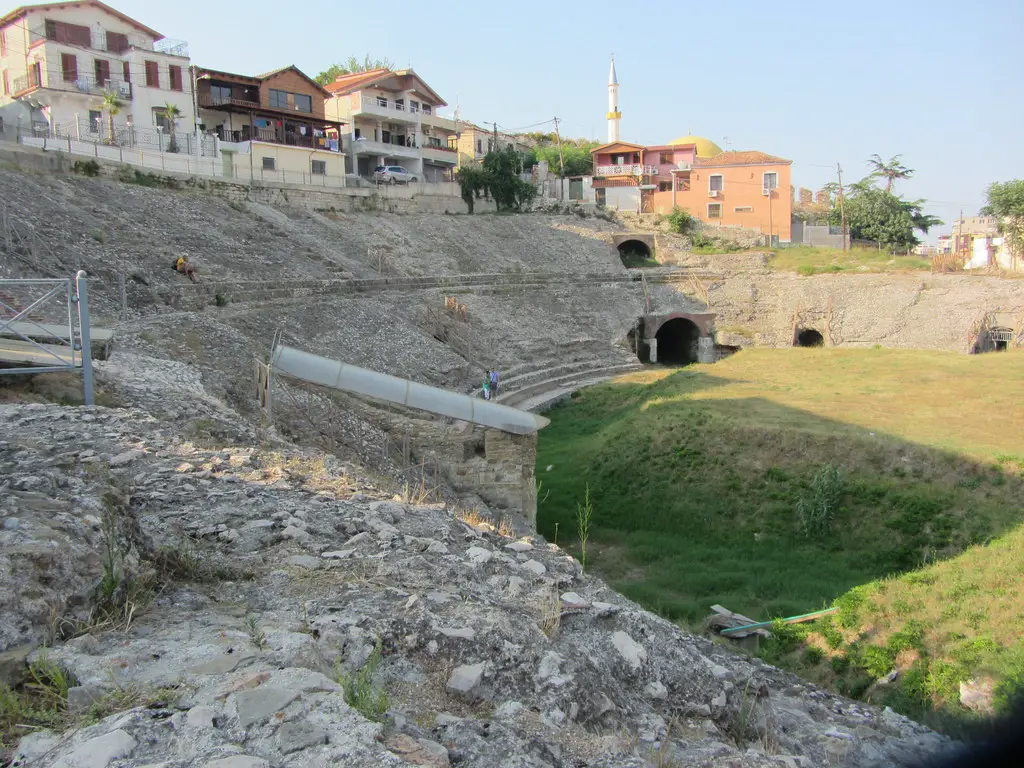
Durres Amphitheatre is a historic landmark located in the city of Durres, Albania.
What to see or do: Visitors can explore the ancient ruins of the amphitheatre, which was built during the Roman Empire in the 2nd century AD.
They can marvel at the impressive architecture and imagine what life was like during that time.
Don’t miss: Make sure to visit the underground area, which was once used to house the animals for the gladiator fights. Also, don’t miss the beautiful mosaic floors that have survived throughout the centuries.
Insider travel tips: Be prepared to do some walking as the amphitheatre covers a vast area. There are several information boards scattered throughout the site, providing visitors with a detailed history of the amphitheatre.
It’s best to visit early in the morning or late in the afternoon to avoid the crowds and the heat.
8. Castle of Berat-Berat
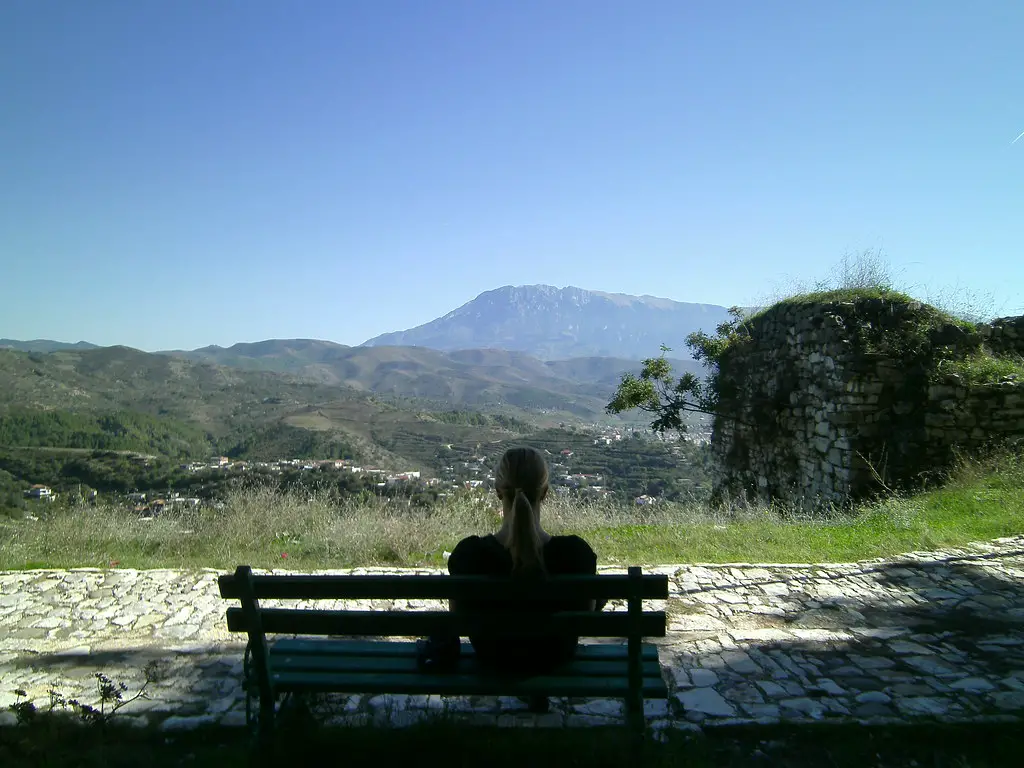
The Castle of Berat, also known as the Berat Fortress, is a medieval fortress located in the city of Berat, Albania.
What to see or do: Visitors can explore the fortress and its surrounding area and enjoy stunning views of the city and the Osum River.
The castle features several churches, including the 13th-century Red Mosque, and the Onufri Museum which houses a valuable collection of icons.
Don’t miss: Don’t miss the opportunity to visit the Kala district, also known as the “castle quarter.” Here you can experience the traditional Albanian way of life and enjoy local cuisine in family-owned restaurants.
Insider travel tips: Wear comfortable shoes as there are many steps to climb within the fortress.
9. Rozafa Castle-Shkoder
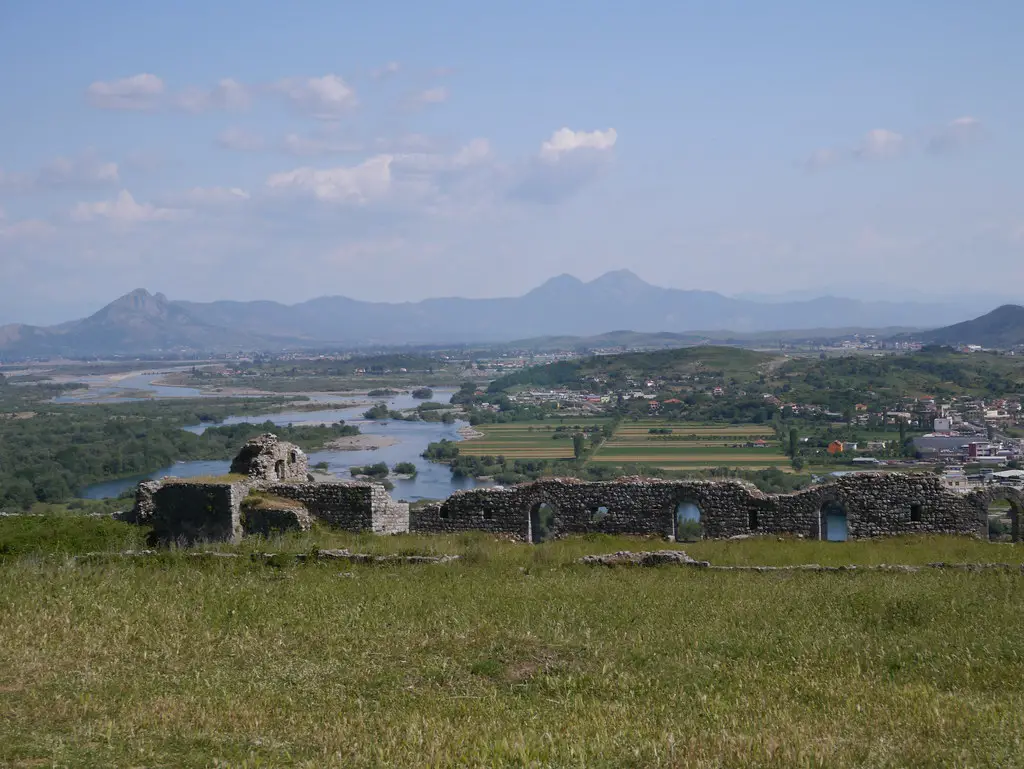
An ancient castle located in the city of Shkoder in Albania.
What to see or do: Explore the castle’s ruins, stunning views of Lake Shkodra and surrounding areas.
Don’t miss: The Tower of Rozafa, the castle’s oldest and most prominent feature, which offers breathtaking views of the city and its surroundings.
Insider travel tips: Wear comfortable shoes as there are many stairs and ramps to climb.
Also, visit the castle early in the morning or late afternoon to avoid crowds and enjoy the panoramic views in a peaceful atmosphere.
10. Albanian Alps-Theth
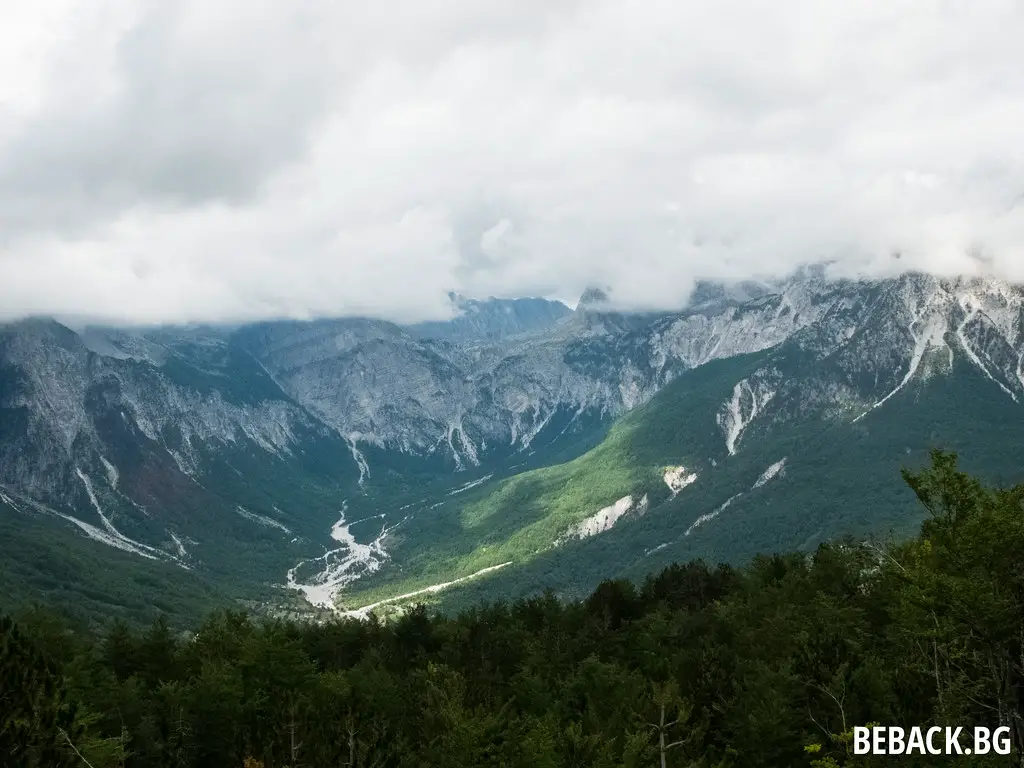
A stunning mountain range located in northern Albania known as the Albanian Alps.
What to see or do: Hike the picturesque mountain trails and enjoy breathtaking views of the landscape. Visit the village of Theth which offers traditional farmhouses and a stunning waterfall.
Explore the crystal-clear waters of the Blue Eye, a natural spring located in the valley.
Don’t miss: The hike to the peak of Mount Jezerca, which stands at 2,694 meters, offering panoramic views of the surrounding mountains. Also, the chance to experience the unique culture and hospitality of the local people living in the remote mountain villages.
Insider travel tips: Be prepared for some challenging hikes and pack accordingly. It is recommended to bring sturdy hiking boots, plenty of water and snacks, and appropriate clothing for unpredictable weather conditions.
Consider staying in a local guesthouse for an authentic Albanian experience.
August and September are the best times to visit, as the weather is mild and the landscape is at its most beautiful.
11. Blue Eye-Saranda
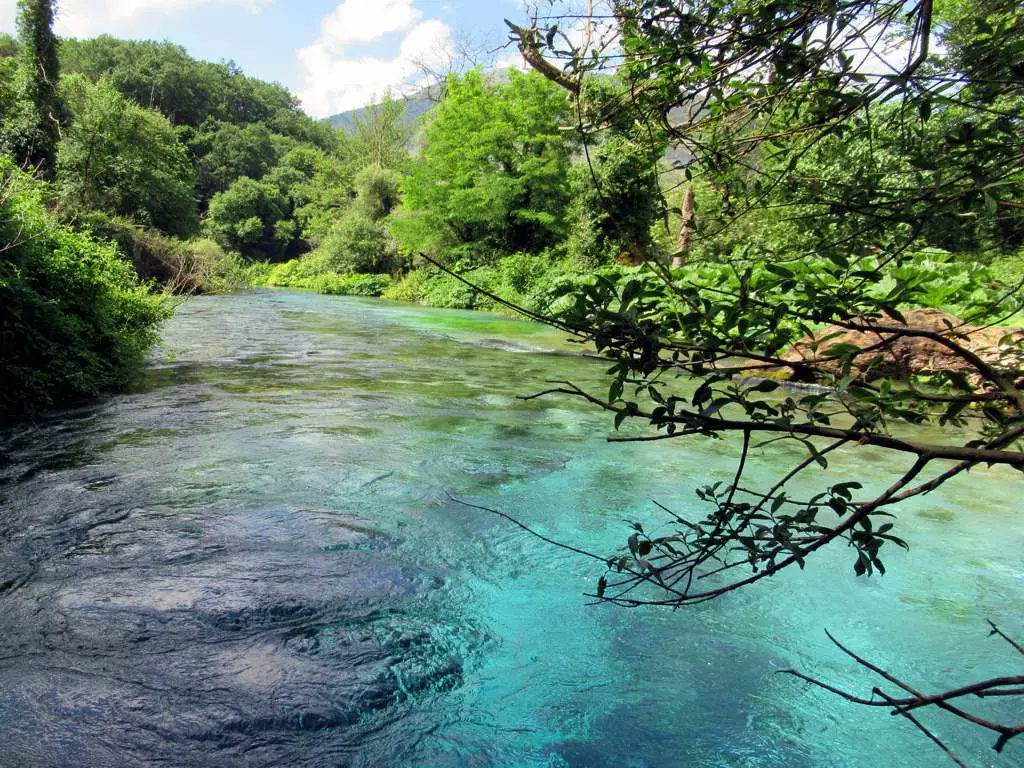
Blue Eye is a natural spring located near the southern Albanian town of Saranda.
What to see or do: Visitors can admire the crystal-clear blue water of the spring which seems to change color throughout the day.
Don’t miss: Don’t miss the chance to see the surrounding natural beauty, including the nearby Bistrica Canyon.
Insider travel tips: Try to visit early in the morning or late in the afternoon to avoid crowds.
12. Kruja Castle-Kruja
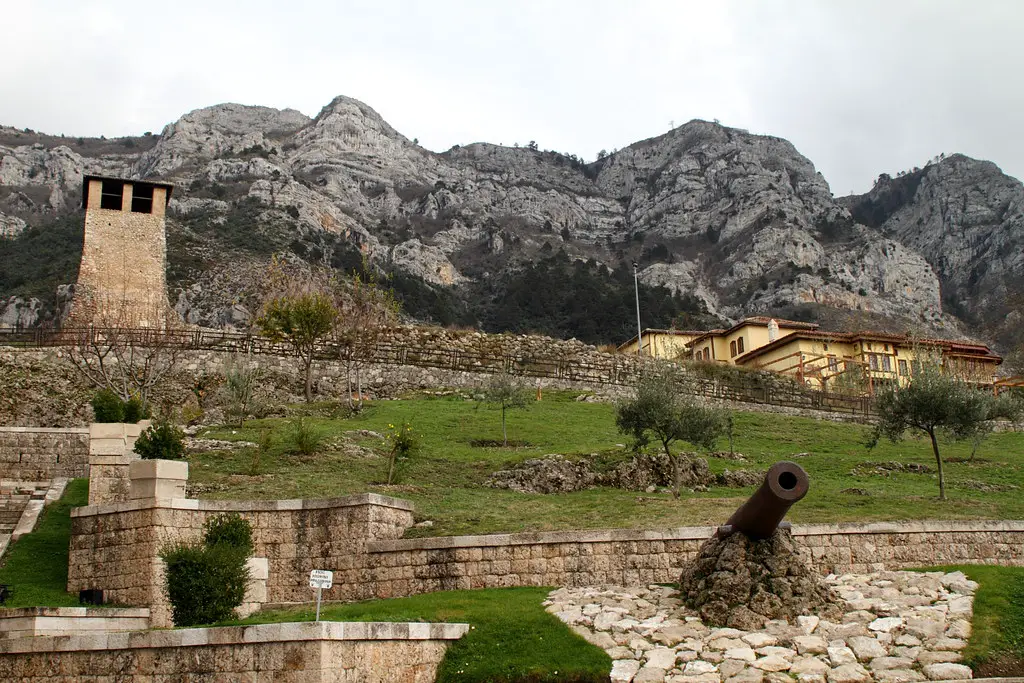
Kruja Castle is a medieval fortress located on a hill in the city of Kruja, Albania.
The castle was built in the 4th century and served as the residence of the Albanian national hero Skanderbeg in the 15th century.
What to see or do: Explore the castle walls and towers, visit the Skanderbeg Museum inside the castle grounds which displays weapons and artifacts from Skanderbeg’s time, and enjoy panoramic views of the surrounding landscape from the castle’s hilltop location.
Don’t miss: The Ethnographic Museum, located just outside the castle walls.
It showcases traditional Albanian architecture and lifestyle from the 18th to the early 20th century, including authentic household items and clothing.
Insider travel tips: – Wear comfortable shoes to climb up to the castle, as the path can be steep and rocky.
13. Skanderbeg Museum-Kruja

The Skanderbeg Museum is a historical museum located in Kruja, Albania.
The museum is dedicated to the life and achievements of George Kastrioti Skanderbeg, a national hero who led the resistance against the Ottoman Empire.
What to see or do: Visitors can explore the various exhibits that showcase artifacts, weapons, and documents from Skanderbeg’s time. The museum also features a gallery that displays Albanian art from the 16th to the 20th century.
The panoramic view of Kruja from the museum is simply splendid.
Don’t miss: Make sure you don’t miss Skanderbeg’s sword, which is on display in the museum’s armory. Also, the museum’s architecture and design are not to be missed.
Insider travel tips: The museum has guided tours available in English, but it’s best to book in advance.
The best time to visit Skanderbeg Museum is in the morning before the crowds arrive, or in the late afternoon when the tour groups have left.
Combine with a trip to the Kruja bazaar located within walking distance of the museum.
14. Mirahor mosque-Korce
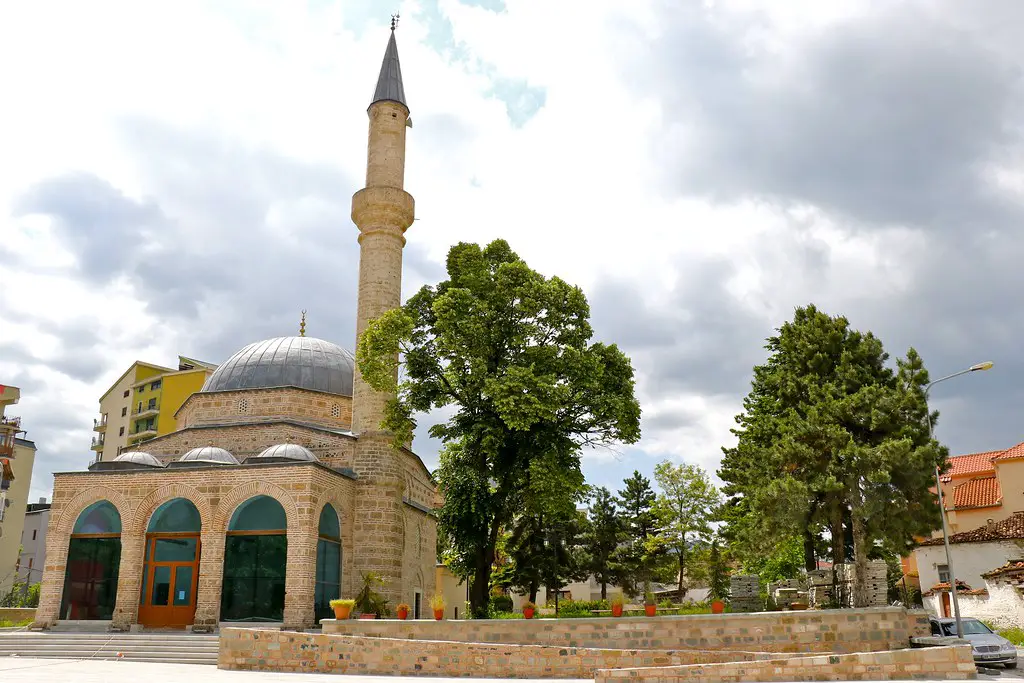
Mirahor mosque is a historical mosque located in the city of Korca, Albania.
What to see or do: Visitors can see the unique blend of Ottoman and Albanian architectural style in the mosque’s design. The mosque has a large central dome and beautiful wall decorations.
Don’t miss: Make sure to appreciate the intricate details of the mosque’s facade and the beautifully carved wooden pulpit inside.
Insider travel tips: Visitors should respect the mosque’s religious significance and dress modestly. The mosque is open to visitors outside of prayer times.
15. Gjirokastra Fortress-Gjirokaster
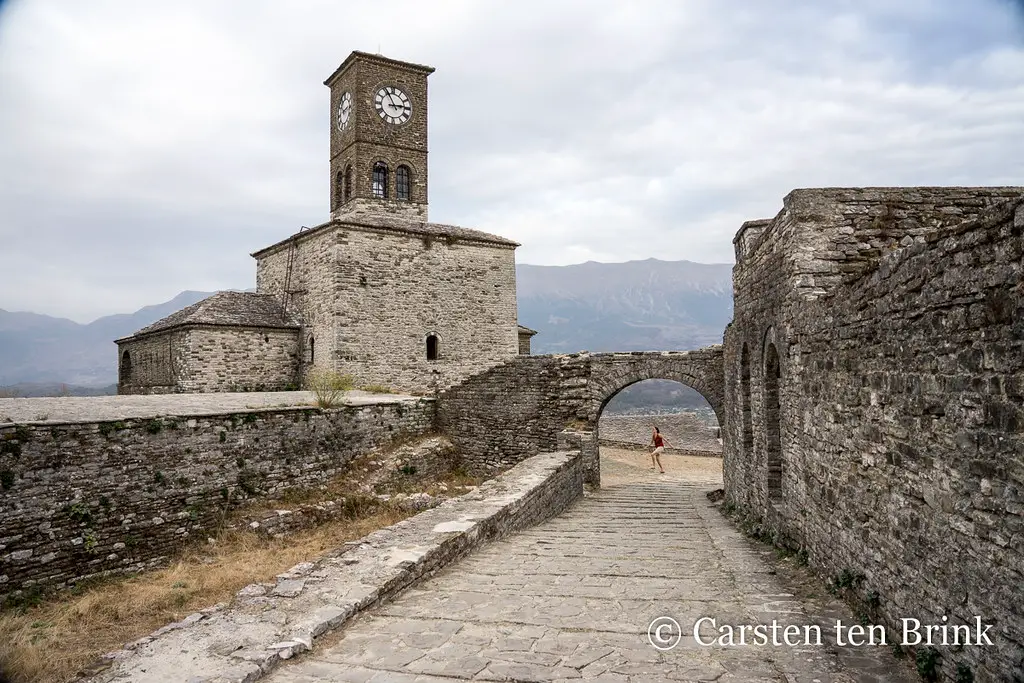
Historical fortress located in the city of Gjirokastra, Albania.
What to see or do: Explore the vast interior of the fortress, climb to the top to enjoy the panoramic views of the city, and visit the museum inside the fortress displaying a variety of artifacts from the Ottoman period.
Don’t miss: The stunning Ottoman architecture of the fortress, which has been preserved remarkably well over the centuries.
Insider travel tips: Wear comfortable shoes as there is a lot of walking involved, try to visit the fortress early in the morning or around sunset for the best photo opportunities, and be prepared for some steep inclines and steps as you explore the fortress.
16. Apollonia Archaeological Park-Fier
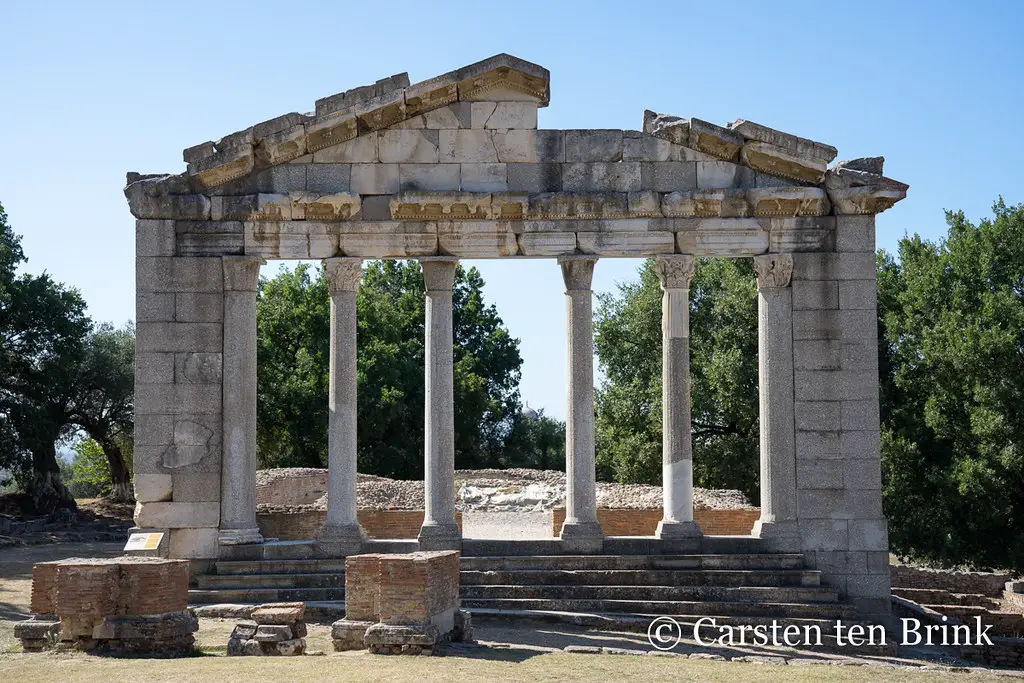
The Apollonia Archaeological Park is an ancient Greek city located near the town of Fier in Albania.
What to see or do: The park features various well-preserved ruins like ancient walls, colonnades, buildings, and a circular fountain. The visitors can explore the city’s agora, the temple of Artemis, and the Museum of Archaeology.
The park offers spectacular views of the Adriatic coast, and the hillsides dotted with olive trees provide ample picture-perfect moments.
Don’t miss: Don’t miss the apse of the basilica, which is one of the most exquisite examples of Christian art and architecture. Several mosaic floors that have been discovered are worth seeing.
Insider travel tips: Carry sunscreen and a hat while visiting the park during summers as the sun can be harsh.
17. Zvernec Monastery-Vlore
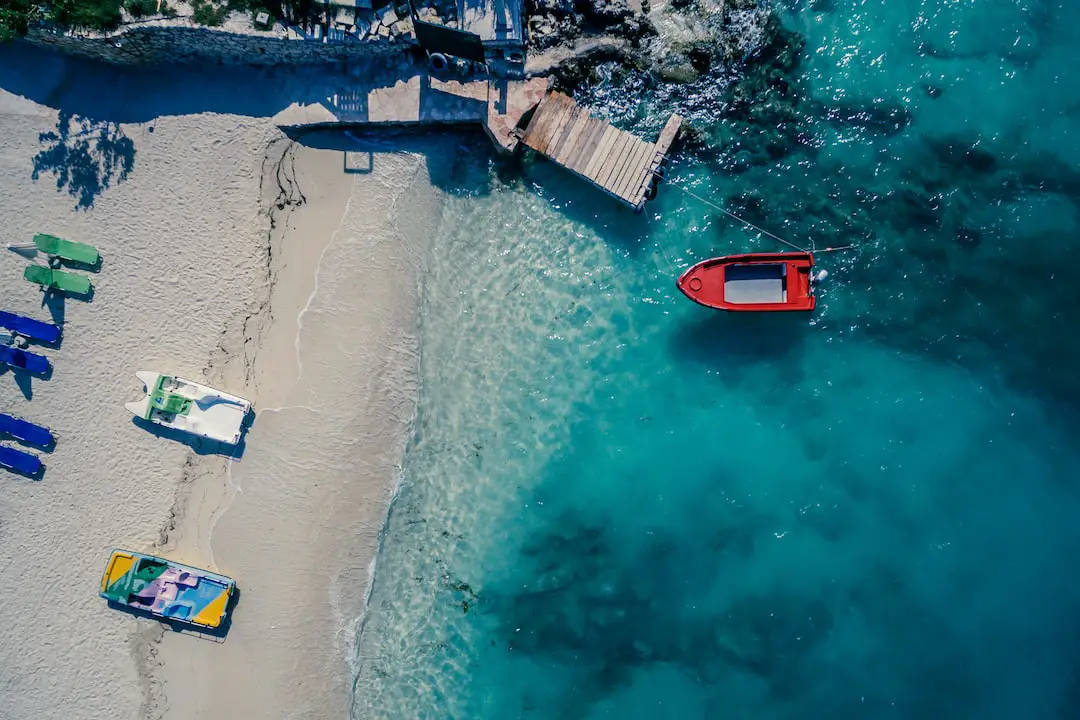
Zvernec Monastery is a monastery located on a small peninsula near Vlore, Albania.
What to see or do: The monastery is surrounded by beautiful greenery and offers a peaceful atmosphere. Visitors can explore the 13th-century church, the chapel, and enjoy the scenic views of the Ionian Sea.
Don’t miss: Don’t miss visiting the chapel where you can see a painting of Saint Anthony, the protector of sailors. Also, be sure to walk around the lush green gardens surrounding the monastery for a serene experience.
Insider travel tips: It is recommended to visit the monastery early in the day to avoid crowds. The best time to visit is during spring or summer when the gardens are in full bloom.
Visitors may need to walk a bit to reach the monastery as vehicles are not allowed on the peninsula.
18. Petrela Castle-Petrela
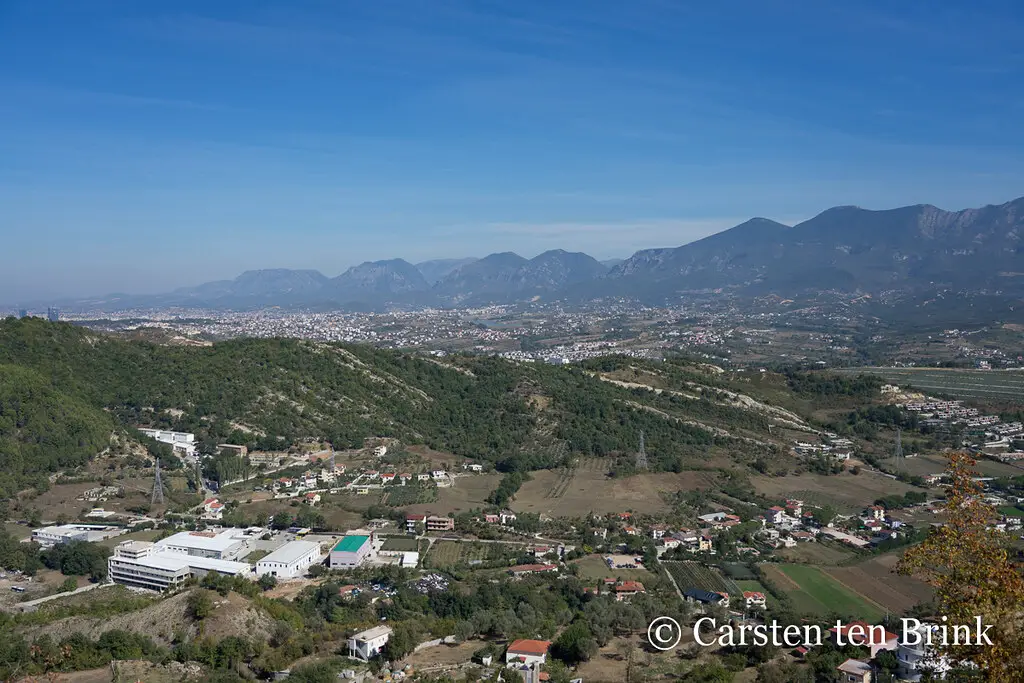
Petrela Castle is a medieval fortress located in the village of Petrela, roughly 15 km southeast of Tirana.
What to see or do: Visitors can explore the castle’s walls, towers, and interior rooms, which offer stunning views of the surrounding landscape. In addition to its historical significance, the castle is surrounded by natural beauty, including a nearby river and green forests.
Don’t miss: Don’t miss the opportunity to climb to the castle’s highest tower for breathtaking panoramic views of the surrounding area.
Insider travel tips: Make sure to wear comfortable, sturdy shoes for the climb to the top of the castle.
Additionally, the castle can get crowded during peak tourist season, so it’s recommended to visit early in the morning or later in the afternoon.
Finally, be sure to bring a camera to capture the stunning views from the top.
19. Shengjin Beach-Shengjin
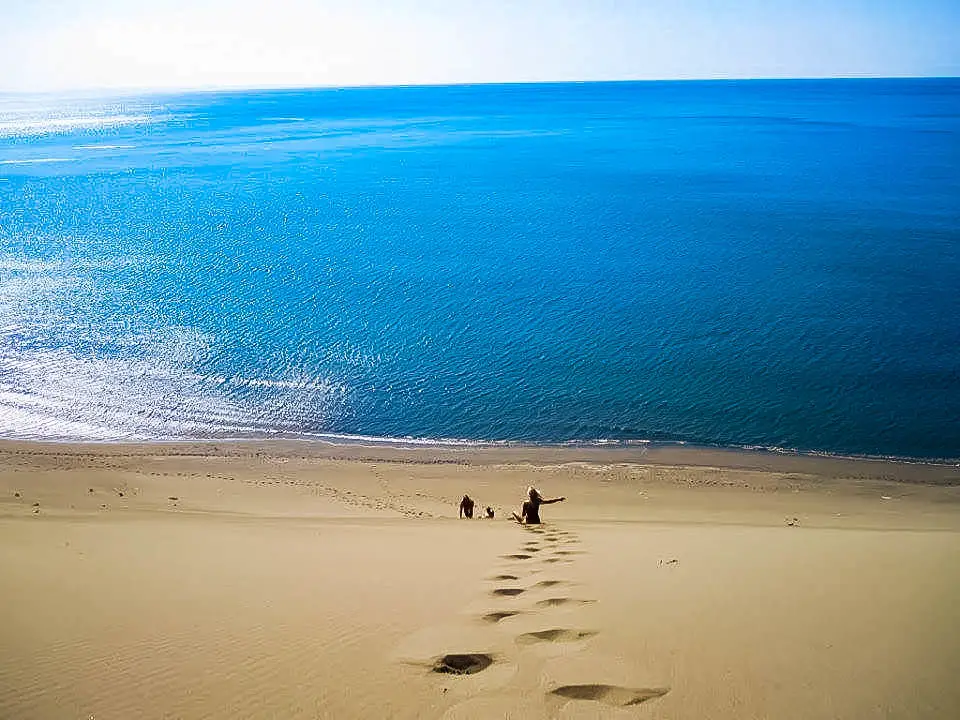
Shengjin Beach is a stunning coastline located in the city of Shengjin, Albania. It stretches for 7km along the Adriatic Sea and offers a tranquil retreat for visitors.
What to see or do: The crystal clear turquoise waters and the soft sandy beach are perfect for swimming, sunbathing, and relaxing. The beach also offers a wide range of water sports activities such as parasailing, jet skiing, and banana boating.
Don’t miss: Take a stroll along the promenade that runs parallel to the beach, where you can find a variety of restaurants, cafes, and bars that serve delicious Albanian cuisine.
Insider travel tips: The best time to visit Shengjin Beach is between June to August when the weather is warm and perfect for swimming.
However, if you prefer fewer crowds, visit during May or September. Don’t forget to bring your sunscreen, sunglasses, and comfortable footwear if you plan to take long walks along the beach.
20. Syri i Kalter-Tirana
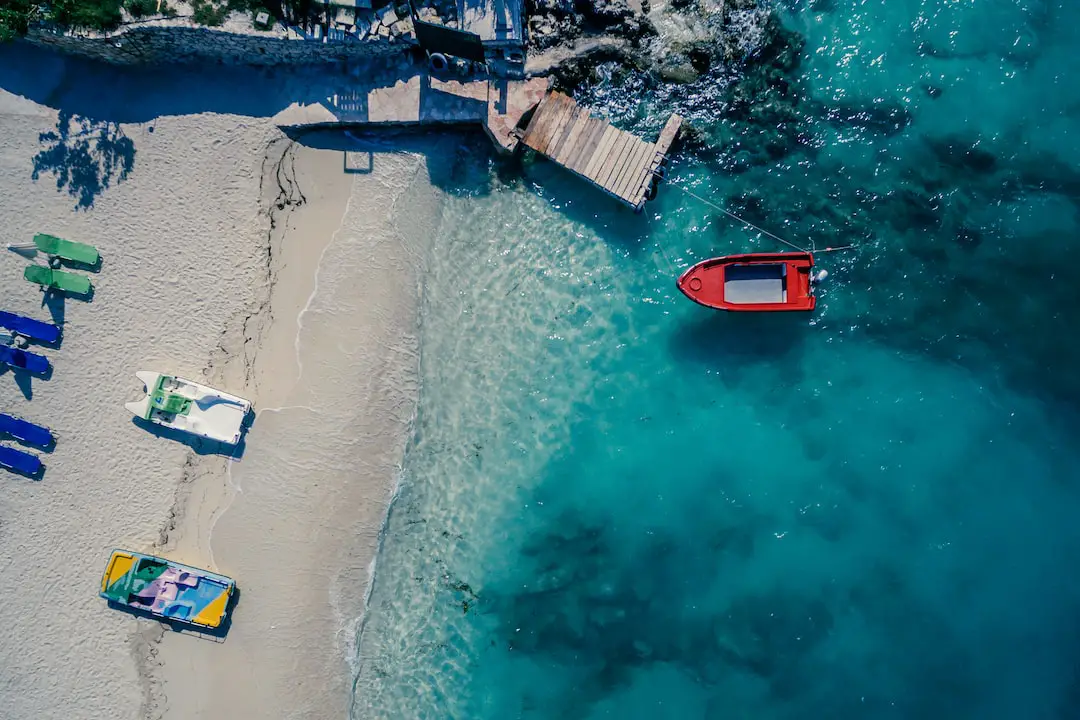
Syri i Kalter (also known as the Blue Eye) is a natural spring located near the town of Muzhak, close to Tirana, Albania.
What to see or do: Visitors can admire the stunning crystal-clear blue water of the spring, which is surrounded by lush greenery and trees.
The water temperature remains constant at around 10-12 degrees Celsius all year round, creating a unique and refreshing experience for swimmers who dare to take a dip.
Don’t miss: Make sure to take a walk through the nearby forest trails to fully appreciate the natural beauty and tranquility of the area.
Additionally, there are some local restaurants where you can taste traditional Albanian dishes, which are definitely worth trying.
Insider travel tips: It is recommended to visit Syri i Kalter during the week or early in the day to avoid crowds.
For nature enthusiasts, there are some great hiking trails that start from the spring and can take you to other parts of the beautiful countryside.
Finally, be aware that the water can be cold, so it’s best to bring a towel and a change of clothes if you plan on swimming.
21. Lungomare Shengjini-Shengjin
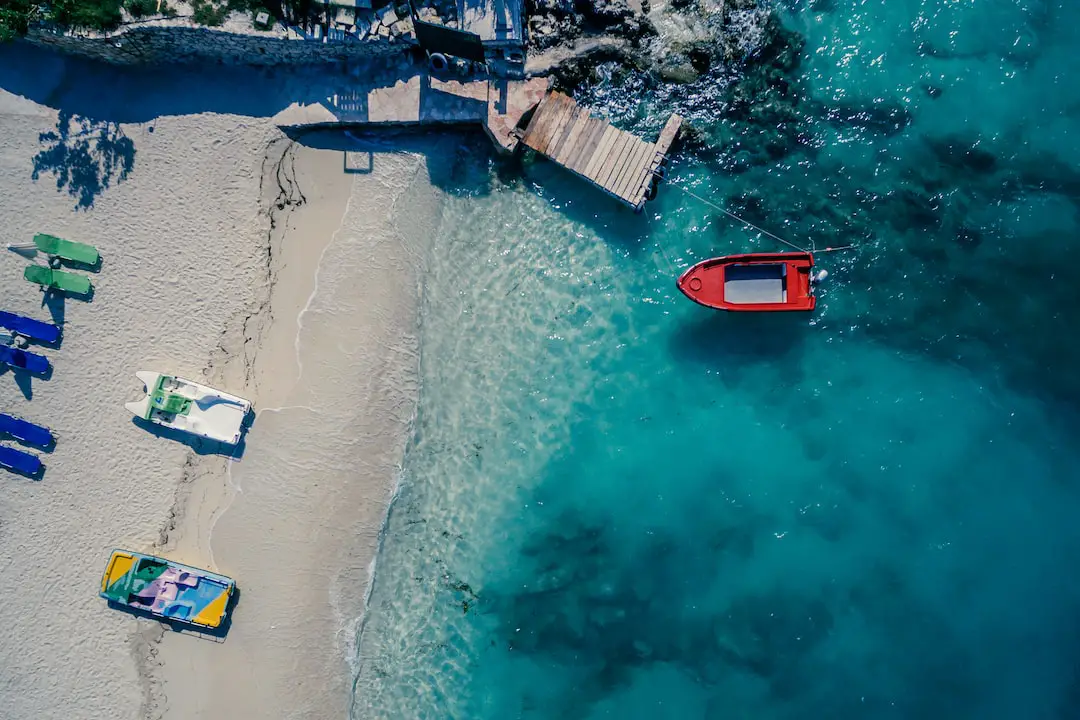
Lungomare Shengjini-Shengjin is a picturesque seaside promenade that runs parallel to the sandy beach of Shengjin.
What to see or do: Take a leisurely stroll along the palm-lined promenade, soak up the sun, and enjoy the beautiful views of the Adriatic Sea.
Relax on the beach and swim in the crystal-clear waters.
There are several cafes, bars, and restaurants along the promenade where you can enjoy a meal or a drink with a sea view.
Don’t miss: Don’t miss the opportunity to watch the sunset over the sea from the promenade. The view is truly breathtaking and a perfect way to end a relaxing day at the beach.
Insider travel tips: To avoid the crowds, visit Lungomare Shengjini-Shengjin in the early morning or late afternoon. The promenade can get busy during the peak tourist season.
Also, be sure to bring sunscreen and plenty of water to stay hydrated while spending time on the beach.
22. National Arts Gallery-Tirana
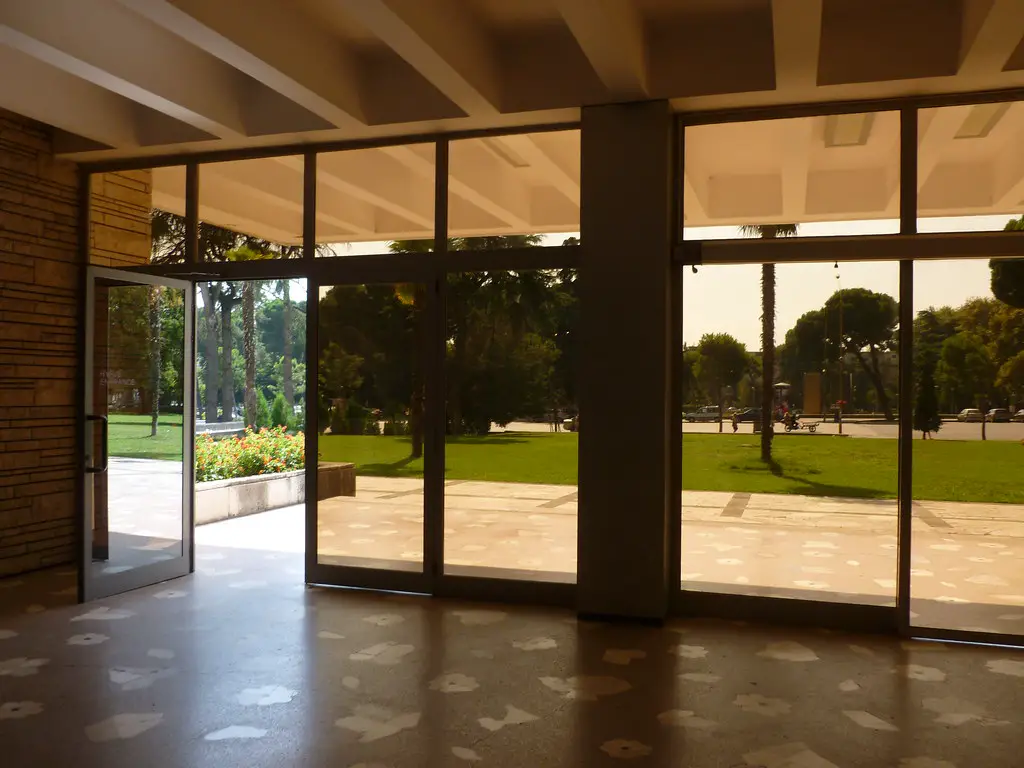
National Arts Gallery-Tirana is the largest art institution in Albania, located in the heart of Tirana.
What to see or do: The gallery showcases a vast collection of works by Albanian artists from the 19th century to contemporary art. Visitors can admire paintings, sculptures, and multimedia art installations.
The gallery also hosts temporary exhibitions that cover various art styles and themes.
Don’t miss: The iconic “Albanian Epopee” by painter Sali Shijaku is a must-see attraction.
It’s a series of large-scale paintings that narrate the history of Albania from ancient times to the end of the Second World War.
Insider travel tips: If you want to avoid the crowds, it’s best to visit the gallery during weekdays. The admission fee is affordable, and there are audio guides available in different languages.
Make sure to check the website for upcoming events and exhibitions before visiting.
23. Bunk’Art 2-Tirana

A museum in Tirana, Albania, housed inside a nuclear bunker built during the Cold War era.
What to see or do: Explore the underground bunker which has been transformed into a museum showcasing Albania’s history during communism and wartime. There are several rooms and exhibits showcasing various aspects of Albanian life under Enver Hoxha’s regime.
Don’t miss: The audiovisual displays inside the bunker which provide a fascinating insight into Albania’s history and its struggles against oppression and dictatorship.
Insider travel tips: – Wear comfortable shoes suitable for walking on uneven ground.
24. Bunk’Art 1-Tirana

Bunk’Art 1 is an underground anti-nuclear bunker turned museum in the heart of Tirana, Albania.
What to see or do: Explore the underground passageways, exhibition rooms, and halls of Bunk’Art Learn about the history of Albania’s communist regime and how the bunker was used during the Cold War.
See exhibits featuring propaganda posters, military memorabilia, and interactive displays.
Don’t miss: Don’t miss the opportunity to experience what life was like inside the bunker.
The museum has recreated rooms showcasing the bunk beds, radios, and kitchenettes used by government officials who were stationed inside for months at a time.
Insider travel tips: Arrive early in the morning to beat the crowds. Wear comfortable shoes as the museum involves a lot of walking and standing.
Take advantage of the knowledgeable guides who offer a wealth of information and insight into the history of the bunker and Albania’s past.
25. Preza Castle-Preza

Preza Castle is an ancient castle located in the village of Preza, Albania.
What to see or do: Visitors can explore the ruins of the castle, which date back to the 14th century. The castle offers stunning views of the surrounding countryside and the nearby city of Tirana.
Don’t miss: Be sure to check out the castle’s impressive walls, which are over 3 meters thick in some places. Visitors can also see the remains of a cistern, a chapel, and an old Turkish bathhouse.
Insider travel tips: To fully explore the castle, comfortable shoes are a must. There is a small fee to enter the castle grounds.
The best time to visit the castle is during the spring or fall, when the weather is mild and the crowds are smaller.
26. Ali Pasha Castle-Porto Palermo
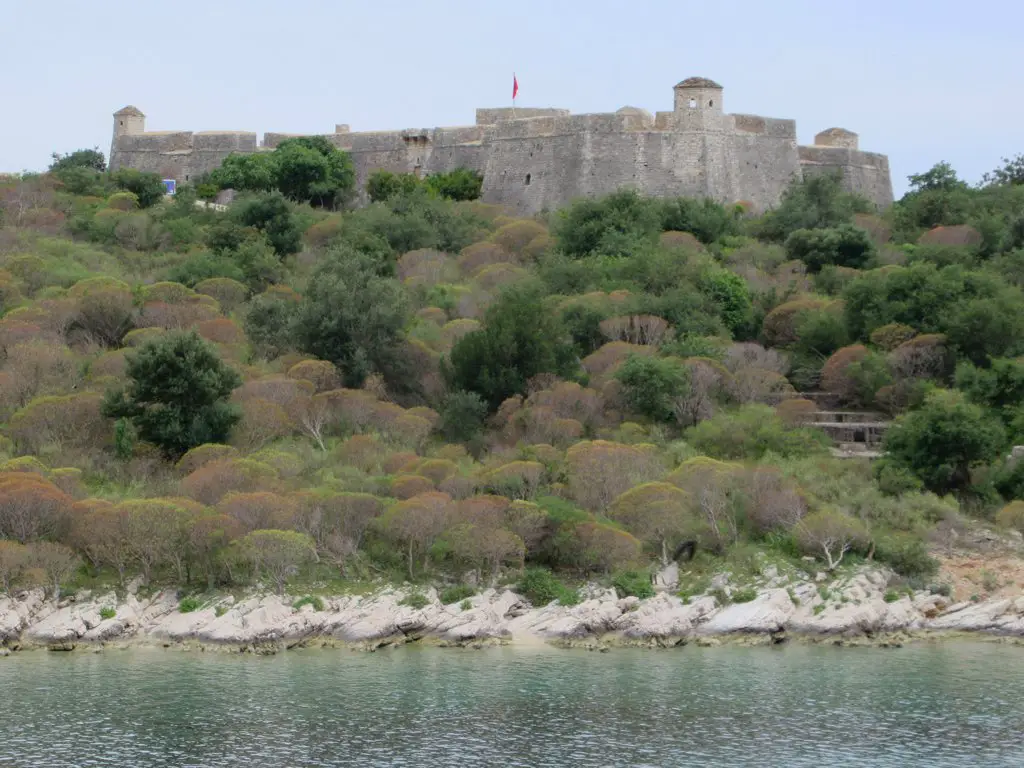
Ali Pasha Castle, also known as Porto Palermo Castle, is a 19th-century fortress located in southern Albania.
What to see or do: Visitors can explore the castle’s grounds and take in the stunning views of the Ionian Sea. The castle features underground passageways, a dungeon, and a secret tunnel that leads to the sea.
Don’t miss: Be sure to check out the castle’s impressive architecture, which includes a unique circular tower and a large courtyard complete with palm trees.
Insider travel tips: For the best experience, visit the castle during the early morning or late afternoon hours to avoid the crowds. Don’t forget to wear comfortable shoes as there is a bit of hiking required to reach the castle.
Additionally, the nearby beach is a great spot for a relaxing swim after visiting the castle.
27. The Murals of the National Museum of History-Tirana
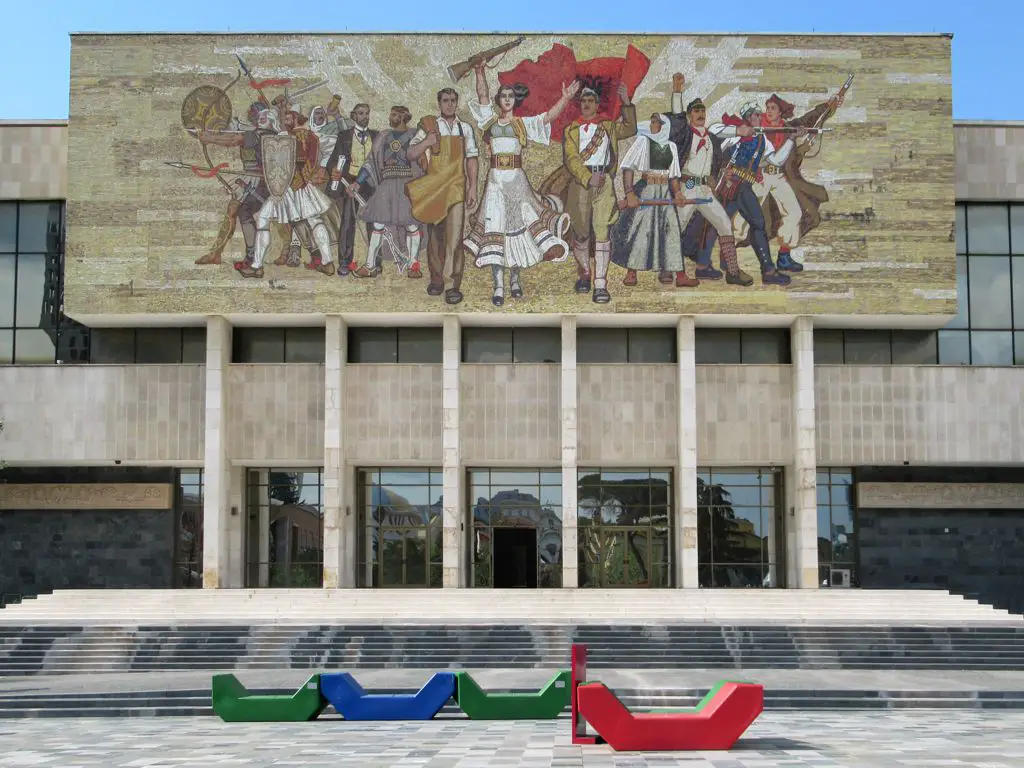
Murals depicting Albanian history and culture located in the National Museum of History in Tirana.
What to see or do: Admire the colorful and well-preserved murals that cover the walls of the museum’s main hall, depicting significant events and figures from Albania’s history.
Don’t miss: The iconic “Albania” mural, which portrays a confident and strong Albanian woman holding a traditional flag and wearing a Peasant’s Revolt hat.
Insider travel tips: Take your time exploring the museum and the murals, as they offer a glimpse into Albania’s rich cultural heritage. Additionally, consider hiring a guide to gain a deeper understanding of the murals and Albania’s history.
28. Kalaja-Kukes
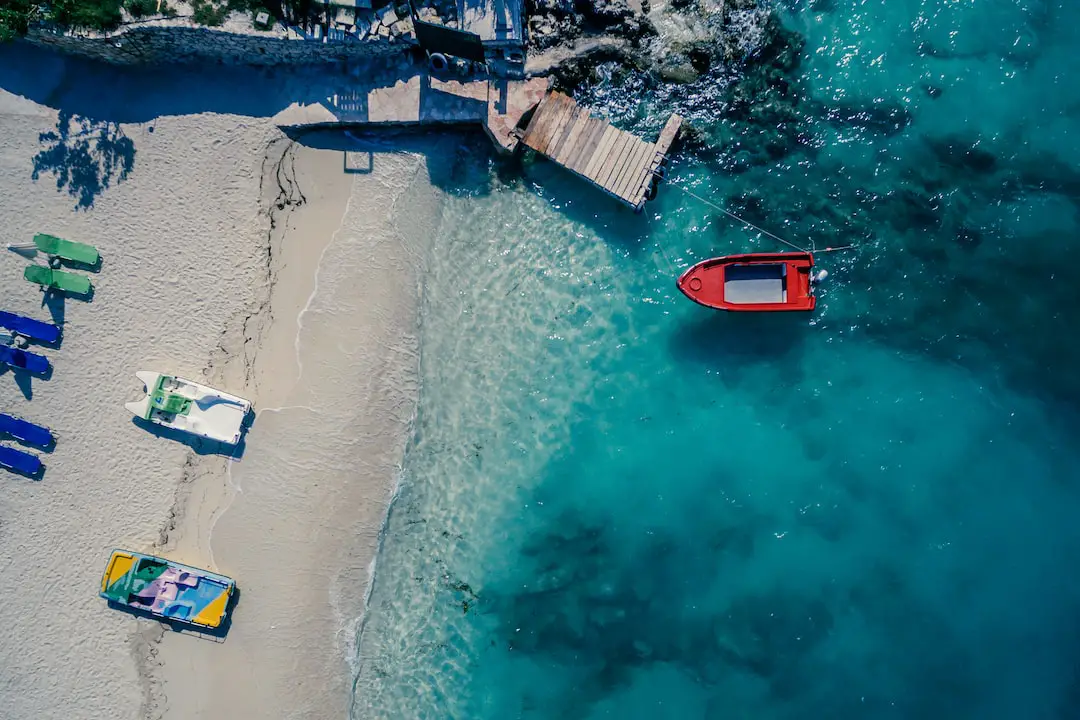
Kalaja-Kukes is a historic castle located in Kukes, Albania.
What to see or do: Visitors can explore the castle’s ruins, which date back to the 4th century AD. From the top of the castle, there are stunning views of the surrounding landscape.
Don’t miss: Be sure to check out the old Ottoman-era clock tower, which stands adjacent to the castle ruins.
Insider travel tips: It’s best to visit Kalaja-Kukes early in the morning or late in the afternoon to avoid the midday heat. Bring plenty of water and wear appropriate shoes for climbing around the castle ruins.
Additionally, be aware that the road leading up to the castle is quite steep and winding, so take care if driving or taking a taxi.